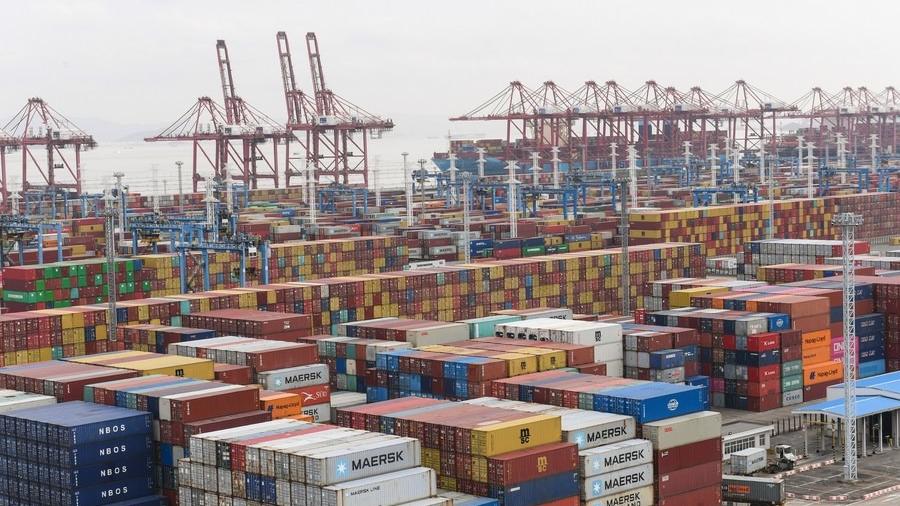 Aerial photo taken on March 3, 2021 shows containers piled up at the Ningbo Zhoushan Port in Ningbo, east China's Zhejiang Province. (WEI XINYANG / XINHUA)
Aerial photo taken on March 3, 2021 shows containers piled up at the Ningbo Zhoushan Port in Ningbo, east China's Zhejiang Province. (WEI XINYANG / XINHUA)
BEIJING - Trade between China and members of the Regional Comprehensive Economic Partnership saw steady growth since the trade agreement took effect at the beginning of this year, official data showed Wednesday.
ALSO READ: Unlocking the RCEP opportunities
Data showed that exports and imports between China and members of the Regional Comprehensive Economic Partnership logged steady growth, increasing 11.1 percent and 3.2 percent from a year earlier to 1.38 trillion and 1.48 trillion yuan, respectively
China's trade with the other 14 member states expanded 6.9 percent year-on-year to 2.86 trillion yuan (about $448.6 billion) in the first quarter of 2022, accounting for 30.4 percent of China's total foreign trade value, according to the General Administration of Customs.
Data showed that exports and imports between China and RCEP members logged steady growth, increasing 11.1 percent and 3.2 percent from a year earlier to 1.38 trillion and 1.48 trillion yuan, respectively.
In the first three months, China's trade with the Republic of Korea and Japan each took up 20 percent of the country's total trade volume with RCEP members. And exports and imports between China and multiple countries, including ROK, Malaysia, and New Zealand, registered double-digit year-on-year growth, said the GAC.
ALSO READ: China, Malaysia begin to impose RCEP tariffs on each other
In terms of goods types, exports of mechanical and electrical products and labor-intensive products dominated, taking up 52.1 percent and 17.8 percent of the total. Imports of mechanical and electrical products, metal ore and ore sand, and agricultural products accounted for 48.5 percent, 9.6 percent, and 6 percent, respectively, GAC data showed.
The RCEP, the world's largest free trade deal to date, is of great significance for promoting free trade, reinforcing the industrial and supply chains, and quickening global economic recovery by eliminating tariffs, facilitating trade, and opening up services and investment.
ALSO READ: RCEP set to spur opening-up
The free trade pact initially entered into force for ten members on Jan 1, 2022, followed by ROK and Malaysia on Feb 2 and March 18. Up to now, the agreement is effective for 12 of its 15 signing members.


